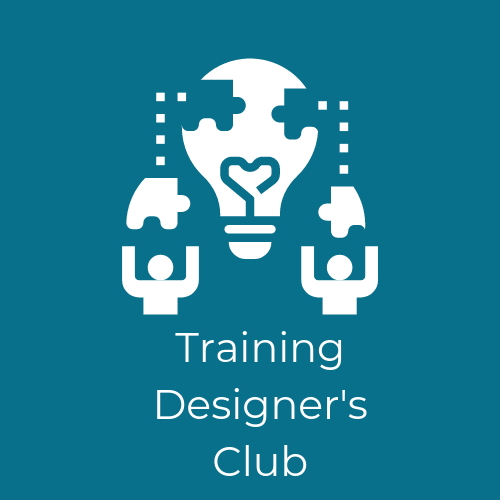It’s sad but true: Not everyone LOVES the detailed training design phase of what we do.
The analysis is exciting. The scoping out phase is satisfying, but once you’ve got the plan in place and your stakeholders on board, it can be difficult to motivate yourself to get stuck into the writing session plans, designing exercises and creating slides.

Whilst this stage is vital for ensuring that the training will be effective and engaging, it can also be overwhelming. Here’s some suggestions to help motivate yourself to get stuck in to this crucial phase:
VISUALISE THE SESSION
Picture yourself running the training session with all the details in place. Visualising the successful implementation of your design can be a powerful motivator. It helps to connect the sometimes abstract task of planning with the very real outcome of delivering training.
FOCUS ON THE ‘BIG ROCKS’
Identify the core elements of your training—the ‘big rocks’. Design these critical parts of your training first. Once these are in place, you’ll find it easier to fill in the smaller pieces around them, creating a cohesive whole.
BREAK IT DOWN
Segment the design process into smaller, more manageable tasks. Tackling one piece at a time can make the process less intimidating and more digestible. Each small victory will move you closer to your goal and provide a sense of achievement.
BE DISCIPLINED
Implement a disciplined approach to your work. Commit to a minimum amount of effort or time each day—say, an hour of focused design work. Once you’ve met your commitment, you can choose to stop or continue if you’ve found your flow.
SET MANAGEABLE GOALS
Establish clear, attainable goals for each design session. This could be completing a section, creating an exercise, or designing a set of slides. Achievable goals can provide direction and a sense of purpose.
APPLY THE 80/20 RULE
Remember the Pareto Principle—the idea that approximately 80% of effects come from 20% of the causes. Aim to complete the most valuable 80% of your design work in the initial stages. This can provide a strong foundation and make the remaining details feel less overwhelming.
REWARD YOURSELF
Set up a system of rewards for reaching key milestones. This could be a coffee break after finishing a section, or something bigger, like a night out for completing a module. Celebrating progress reinforces positive behaviour and can make the process more enjoyable.
COLLABORATE AND SEEK FEEDBACK
Working with others can re-energise your approach to detailed design. Collaborate with peers, seek feedback, and be open to suggestions. A fresh perspective or just some positive feedback on progress so far might just provide the spark you need.
KEEP THE LEARNER IN MIND
Regularly remind yourself of the learner and the impact your training will have on their development. Keeping the end user in focus can be a significant motivator and provide a sense of purpose to your design efforts.
STAY ORGANISED
Keep your workspace and your digital files organised. A clutter-free environment and systematic file management can reduce cognitive load and keep you focused on the task at hand.
USE TECHNOLOGY WISELY
Leverage design tools and software to streamline your work. AI can be used to do the heavy-lifting in terms of content creation, leaving you free to focus on creative elements.
LEARN FROM OTHERS
Spend time reviewing successful training designs from others in your community. This can inspire you and provide practical ideas that you can adapt for your own design.
REFLECT ON PAST SUCCESSES
Look back at your previous work that has been successful. Reminding yourself of your capabilities and how your work has benefited others can boost your confidence and motivation.
By combining these strategies with your initial ideas, you can craft a comprehensive guide that not only motivates training designers to embark on detailed design but also provides them with practical steps to make the process more manageable and fulfilling.
NOTE: This blog was written with the assistance of AI – Including the image!
